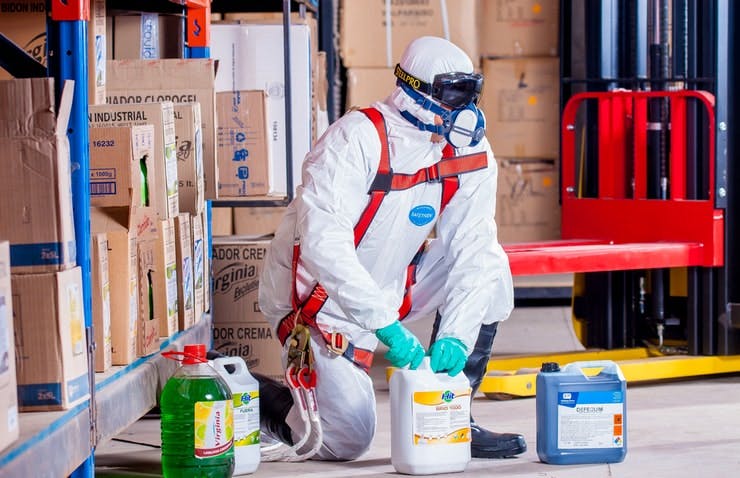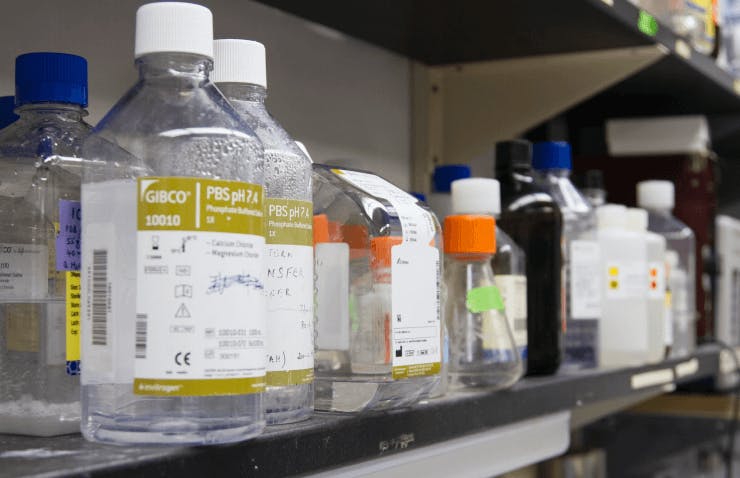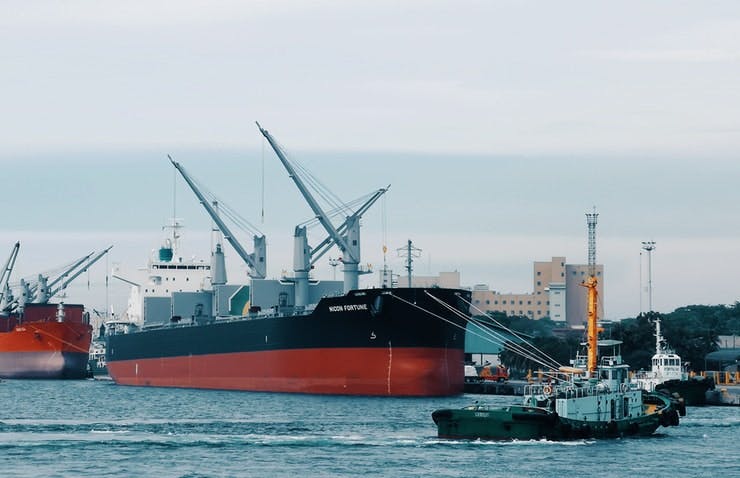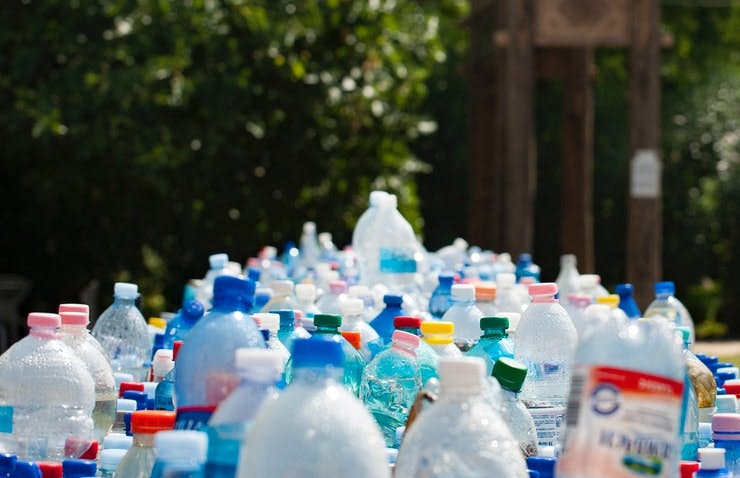10 Chemical Spill Training Courses
We’ve come up with a list of chemical spill training courses to keep your facility and employees safe from chemical spills at work. These courses will inform them of the risks associated with chemicals and the proper response in case of an incident.


1. Chemical Storage and Handling
EdApp’s Chemical Storage and Handling course equips learners with the knowledge they need to lower their risk of chemical exposure. It highlights the importance of having a Safety Data Sheet (SDS) that provides information on a specific substance and its proper handling and labelling procedures. Since chemicals are highly dangerous and flammable, this course will also teach learners about proper storage and safe transportation. As accidents may still happen at work, they’ll also learn what to do in cases of emergency due to chemical exposure, which is also stated in the SDS.
Since EdApp is a mobile learning solution, this course can be taken on smartphones and tablets aside from PCs. It’s perfectly formatted for any device, which means that it’s always responsive and functions seamlessly. Push notifications can automatically be enabled so that learners are always updated when training is available so they never miss out on new information. Additionally, email reminders can also be sent for those who forget to take their courses.
Cost: Free
Scope: Working safely with chemicals, Safety Data Sheet requirements, safe storage & transportation of chemicals
Created by EdApp
Explore the course
2. Toxic Chemicals
Working with toxic chemicals sounds daunting – especially when you don’t know much about it. But, with EdApp’s Toxic Chemicals course, your employee’s apprehension will fade once they’re aware of the chemicals they’re dealing with. This course will help your employees understand the types of toxins and what level of exposure will cause different responses. It also discusses the different types of PPE recommended for hazardous chemicals. To add to that, workplace exposure standards are also explained to raise awareness for the safety of the employees working in factories, laboratories, and other places frequently exposed to chemicals. This course has 4 lessons with short refresher quizzes at the end.
Cost: Free
Scope: Dose-response relationship, types of toxins, routes of exposure, workplace exposure standards
Created by EdApp
Explore the course
3. Spill Response Awareness
eSafety’s course is all about having a proper actionable response when confronted with chemical spills. It teaches learners about the risks associated with chemicals, and then provides the initial steps to take to mitigate any damages caused by them. It also discusses how to keep the environment, facilities, and people safe when working with chemicals. You’re assured that the information in this course is up to standards since it references the Occupational Safety and Health Administration (OSHA), as well as the Environmental Protection Agency (EPA). This course can be completed in just 20 minutes.
Cost: Free
Scope: Chemical spill risks, defensive response to chemical spills, keeping a safe environment
Created by eSafety
Explore the course
4. Chemicals and Health
Coursera’s Chemicals and Health course aims to raise awareness about the effects of chemicals on our bodies and the environment. It starts by discussing the different chemicals found in our surroundings, and explains how we are exposed to them. It then delves into how chemicals affect our health by introducing learners to basic toxicology. Towards the end of the course, learners will know how society addresses risks brought about by chemicals by having laws and policies in place, such as the New Toxic Substances Control Act. At the end of the course, learners are presented with various case studies with real-world examples to have a better understanding of the topics.
Cost: Free
Scope: Chemical exposure, toxicology, health effects of chemicals, environmental laws and policies
Created by Coursera
Explore the course
5. Globally Harmonized System
GHS (Globally Harmonized System) is a worldwide chemical safety program developed to create a harmonized and standardized system of classifying and labeling hazardous chemical materials. In this EdApp course, workers will learn about this systematized classification system, from its history and background to application and implementation, as well as how hazard classification and communication works. It also explores the different hazard classes under the GHS standards, alongside a step-by-step process of identifying and classifying them to avoid work hazards, such as chemical spills. The primary objective of this course is to patch up the confusing aspects of the classification and labeling of chemicals, ensuring consistent and simplified communication between involved workers, contractors, and chemical manufacturers. By having this understanding, it will help businesses prevent any work hazards related to chemicals.
To engage learners, EdApp added gamified quizzes into this course, like Strike-out, Image/Word Match, True or False, and more. If you want to further motivate them into completing their lessons, feel free to combine them with some exciting prizes and rewards, like vouchers or discount coupons.
Cost: Free
Scope: Introduction to GHS, application & implementation, hazard classification, hazard communication
Created by EdApp
Explore the courseExplore our library including chemical spill training courses.

6. Consumer and Environmental Safety: Food Packaging and Kitchenware
The effect of packaging in the food we eat is something that we commonly overlook but is an important factor when it comes to food safety. FutureLearn’s course is designed to educate learners on how chemical spills from food packaging can result in acute toxicity that impacts our health, specifically our endocrine system. The course starts by introducing learners to the components of food packaging and the potential chemicals that can contaminate food. It then looks into steps that both the food industry and the government are taking to mitigate these dangerous goods, such as using safer and sustainable materials and implementing new rules in packaging to minimize health and environmental threats. This self-paced course can be taken anytime online and takes 5 weeks to complete.
Cost: Free
Scope: Food packaging materials, unwanted chemicals in food, effects of food contamination, safer alternatives to food packaging
Created by FutureLearn
Explore the course
7. Chemical Spills, Safety Precautions & Response Action
AZTech’s chemical spill training course was created so employees who work with chemicals can recognize the risks when chemicals are released and be able to create a spill response plan. It begins by familiarizing workers with the basic terms related to chemical spills and differentiates confinement from containment. They’ll then learn the different hazards associated with chemical spills and how to act safely during potential and actual incidents. To keep them safe from hazardous chemicals and other combustible materials, the use of personal protective equipment will also be discussed, as well as the use of a spill kit to control the spillage of chemicals. While this course is very comprehensive, you might want to consider others on this list if you’re on a budget.
Cost: $4950
Scope: Introduction to hazardous chemicals, spill prevention & control, developing a spill response plan
Created by AZTech
Explore the course
8. Introduction to Prevention of Pollution by Oil from Ships
Oil pollution is a common incident when it comes to shipping and trade, which is why it’s important that training is given to ship workers to prevent these incidents. Alison’s course starts by introducing learners to marine environment protection through the Oil Pollution Act, which aims to prevent oil spills. Safe practices will also be covered, such as the proper pumping out of bilges and cleaning of oil tanks. Learners will also learn the responsibilities of cleaning these spills and rectifying the damage caused to the ocean. As the effects of oil spills on the ocean can cause massive marine damage, this course also discusses the liabilities of businesses and organizations if any spill occurs. This chemical spill training course is free for anyone to enroll in online and takes up to 5 hours to complete.
Cost: Free
Scope: Marine environment protection, effects of oil spills, Oil Pollution Act, safe shipping practices
Created by Alison
Explore the course
9. Chemical Spills Response
OSG’s Chemical Spills Response course is perfect for protecting yourself and others from the toxicity of chemical spills. Learners are given an introduction to chemical response and the costs associated with it. Here, they’ll also learn about basic spill prevention techniques, such as good housekeeping, preventive maintenance, and spill containment. They’ll then be informed of the different properties of chemicals and the dangers of highly reactive chemicals. In response to chemical spills, learners will also be taught about spill preparation and developing a chemical response, such as having detection equipment and PPEs. This course can be completed in 40 minutes and is CPD-certified, which is perfect for those who need to earn continuing education credits.
Cost: $25
Scope: Introduction to chemical response, spill prevention techniques, chemical properties, spill preparation
Created by OSG
Explore the course
10. Hazardous Materials (Silica, Polymerics and Waste)
This course by EdApp aims to educate learners about the risks and effects of coming in contact with hazardous materials and chemicals. Among the topics covered are hazardous waste, polishing & cleaning chemicals, polymeric safety, and crystalline silica exposure. It will teach learners how to prevent risk or reduce exposure to those substances as well as the proper handling of those materials. They’ll also learn about safe work practices, such as wearing of PPEs and using safer alternatives to hazardous materials.
EdApp’s Hazardous Materials course consists of 4 bite-sized lessons that are focused on key concepts about the topic. Following a microlearning design model, the information in this course is easily understood as they’re delivered in a concise, targeted approach, which increases the likelihood of retention. It’s the perfect format for providing critical information to your employees, which makes training more effective.
Cost: Free
Scope: Hazardous waste, polymerics safety, silica exposure, polishing & cleaning chemicals
Created by EdApp
Explore the courseProtect yourself and the environment with chemical spill training
Chemical spill training ensures the health and safety of your employees who deal with chemicals in their line of work. This is because many of the chemicals we come into contact with have the potential to cause massive harm and environmental damage, and sometimes can even be fatal. With chemical spill training, workers will be able to recognize any chemical hazard, prevent them from happening, and respond to accidents.
